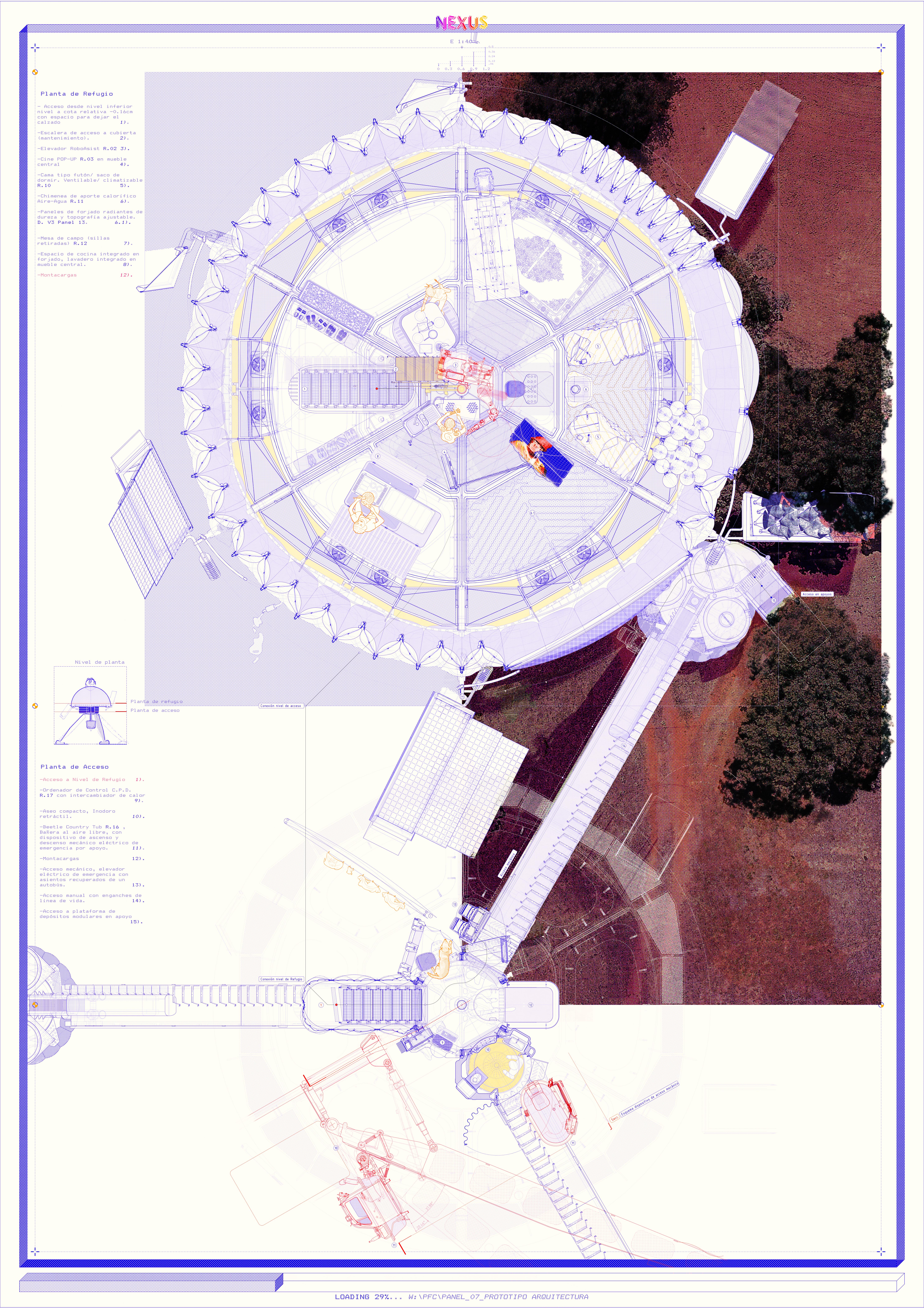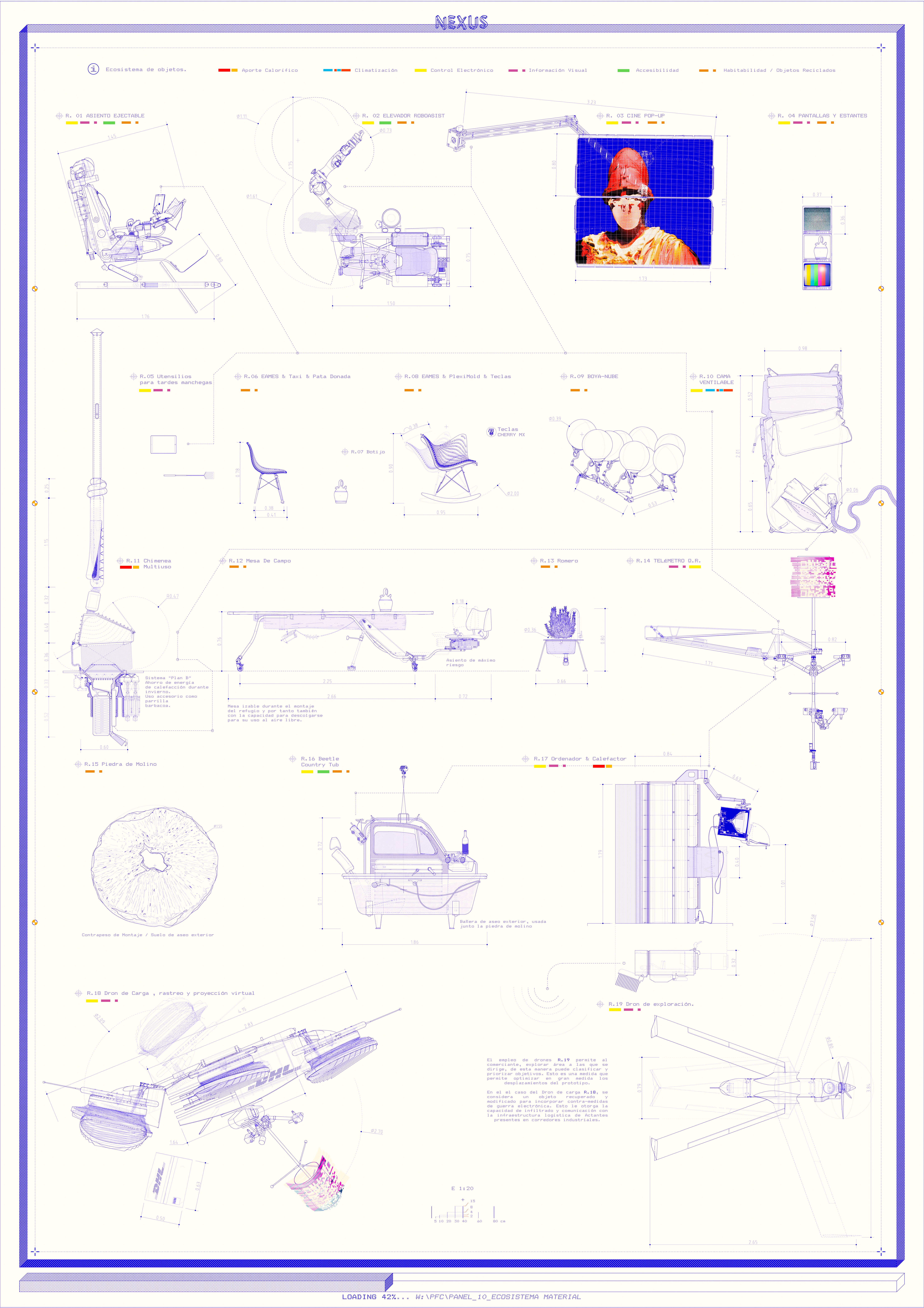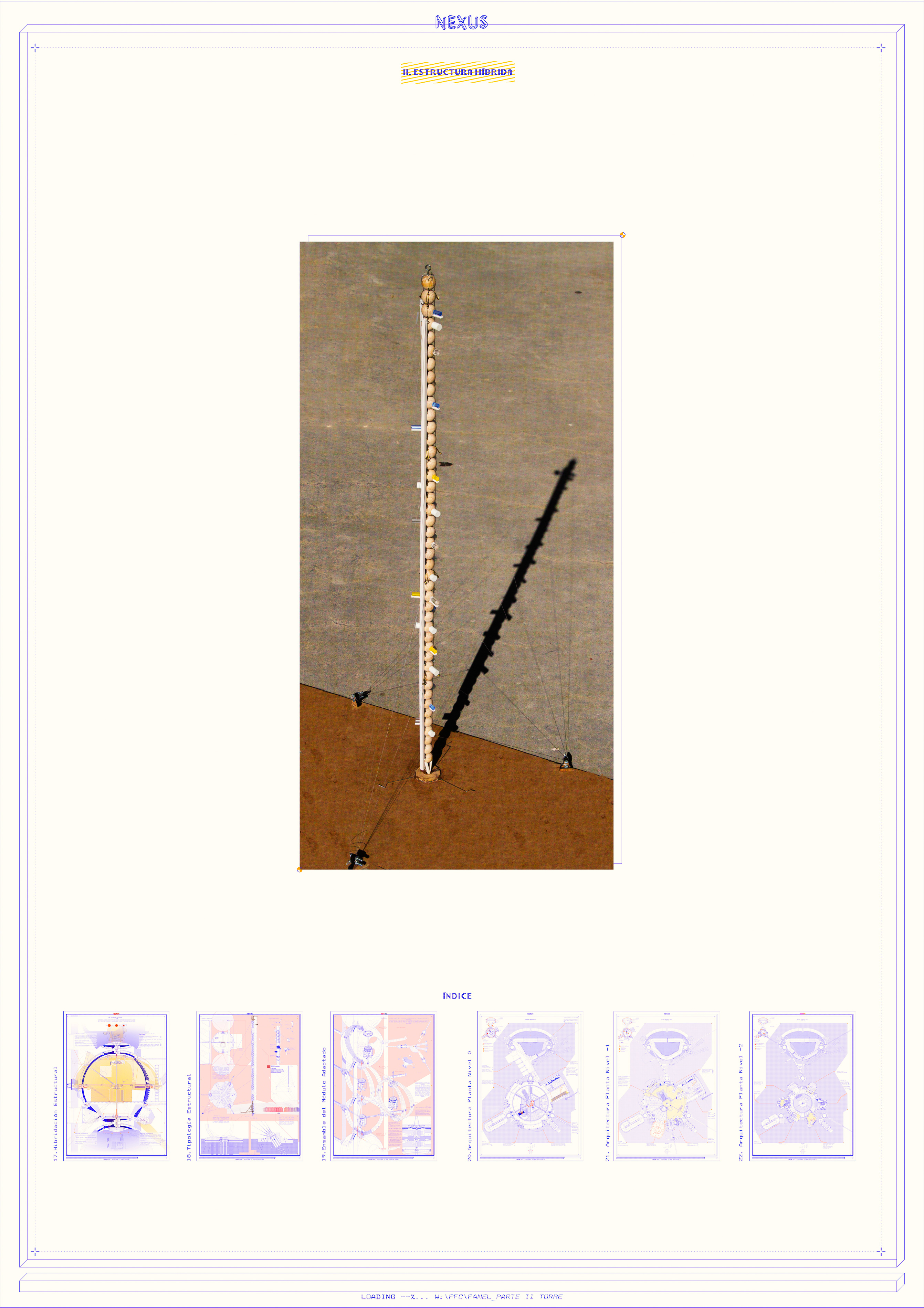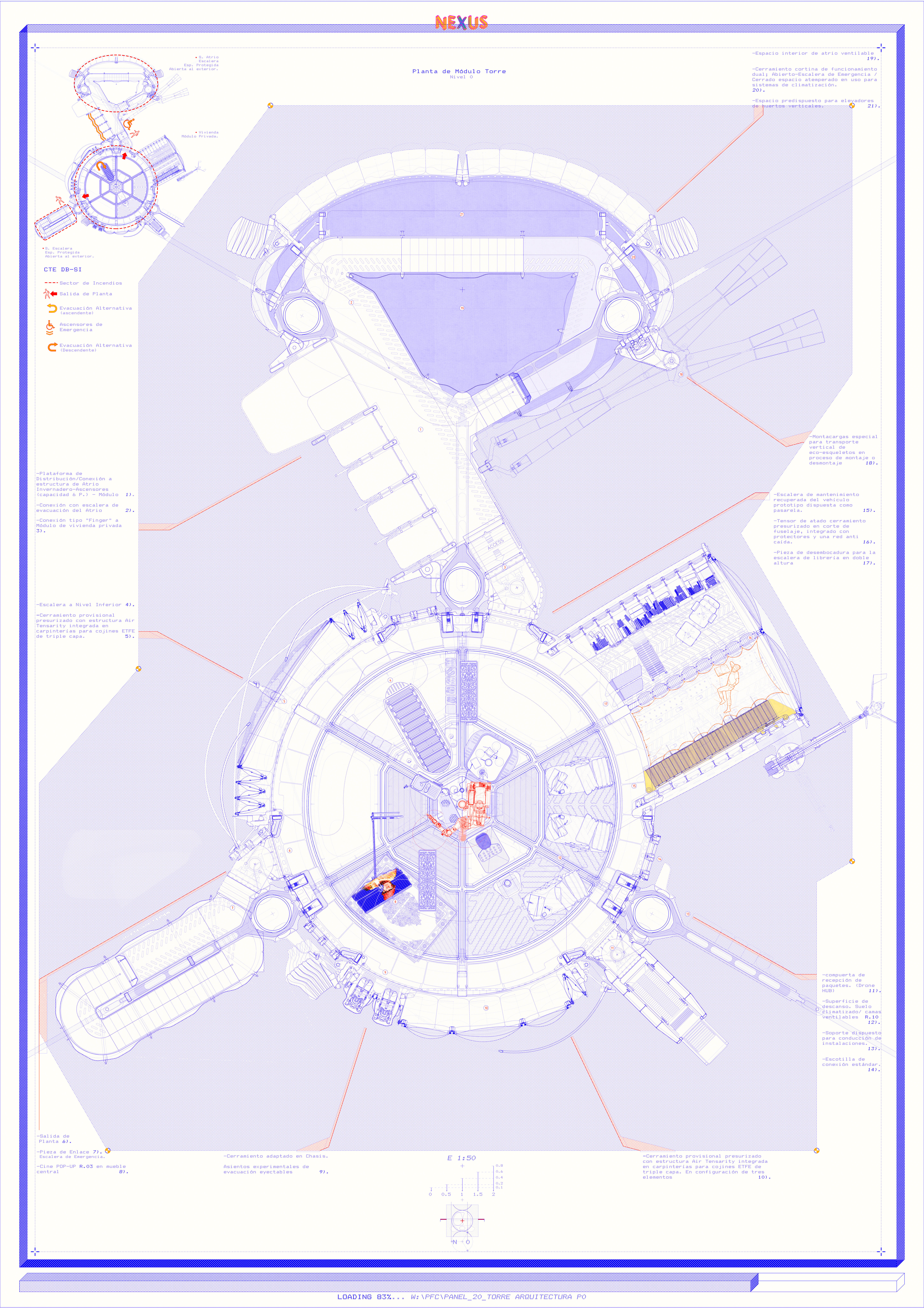Nexus
Santiago del Águila Ferrandis
AI: What are you doing?
User: I don’t know.
AI: If you could be ANYTHING what would you be?
User: Real.
AI: Seems like you want to leave?
2080 d.c. Cities already contain 99% of the population, and the territory of Spain is for the most part a demographic desert. The service sector occupies the majority of the working population, in a socio-economic space based on digital values. The city has become an integration mechanism based on a government of artificial intelligence and its citizens are subject to a programmed balance for all.

50 years from now, cities will be environments directed by Artificial Intelligence and lives of men will be governed by productivity programs controlled by robots. In this scenario, cities would become areas of restricted freedom and few opportunities to escape from data control. This project explores a possible return to a rural environment full of technological contamination (remains of computers, vehicles, industrial machines). Men and women would conquer new areas of freedom self-building their spaces and, therefore, their ways of life, from the recycling of industrial remains.
Nexus talks about a relationship, in this case an individual and his associates who are reclaiming a territory. And for this purpose build a prototype that consists of a set of considerations to facilitate this process. The technological ideas of efficiency and survival employed, generate in this case an ecosystem of compatibility, mobility and reuse. A resilient typology played against the control of machines and I.A. in cities.
This prototype object becomes a tool for transport and habitability generated from objects taken from industrial waste outside cities, in the process of incorporating this objects they recover a functionality and are modified to incorporate other attributes. Thanks to its mechanical configuration it is possible to work on different elements in an evolutionary way. With this the user can choose what are the systems he needs to generate his own domestic landscape. The basic design prototype maintains functionalities that change or adapt during its transport or deployment state, containing the basic structure for the temporary construction of a refuge.
Nexus talks about a relationship, in this case an individual and his associates who are reclaiming a territory. And for this purpose build a prototype that consists of a set of considerations to facilitate this process. The technological ideas of efficiency and survival employed, generate in this case an ecosystem of compatibility, mobility and reuse. A resilient typology played against the control of machines and I.A. in cities.
This prototype object becomes a tool for transport and habitability generated from objects taken from industrial waste outside cities, in the process of incorporating this objects they recover a functionality and are modified to incorporate other attributes. Thanks to its mechanical configuration it is possible to work on different elements in an evolutionary way. With this the user can choose what are the systems he needs to generate his own domestic landscape. The basic design prototype maintains functionalities that change or adapt during its transport or deployment state, containing the basic structure for the temporary construction of a refuge.




The crew of the prototype are explorers and traders, who manufacture objects with the loot gathered out of the voyages in physical and virtual environments. They interact and explore with drones that travel through air traffic routes and the rest of the online community. The use of drones allows the vehicle to explore areas to which it is directed and transport its materials. In this way you can classify and prioritize objectives, thus strategically optimizing to a great extent the displacements of the prototype to the places where you set your camp.









- Prototype Stacking Structure -
Finally, the physical integration of the prototype with the Mechanical systems performing links and services across the unpopulated landscape. This is developed, using a structural system that incorporates components of the prototype in a structural frame that reinforces the chassis, to adapt it to a vertical structure taken from obsolete elements in the corridor links in between cities.

This frame acts as an exoskeleton that hybridizes with the accessibility systems within the prototype and its slabs, providing new systems for anchoring reused elements, and potentially providing three habitable living environments. The levels are connected to the accessibility and evacuation systems along the main vertical structure, while incorporating installations and mounting systems for improved customization and activity specific modules.





The genesis of this prototype is a particular solution, but it could not be unique. The development is carried out with a scalable factor, studying how to generate an integrating system, so that it generates a dense and dynamic community of vehicles adapted to vertical structures in industrial corridors.